Laser liposuction of the abdomen Is a cosmetic procedure that provides for the removal of fat deposits, as well as an effective fight against excess body weight.
Getting rid of fatty deposits in the abdominal area using a laser is an innovative method that minimizes trauma to epithelial tissues, accelerates the process of regenerating subcutaneous tissue. This is evidenced by the positive feedback from patients.
The procedure is carried out in plastic clinics and specialized medical centers that have permits for the provision of services of this type. The procedure of laser abdominal liposuction is carried out by a plastic surgeon who has a specialized education, appropriate qualifications and experience in this field.
The average cost of removing excess fat from the abdominal area varies depending on the area of the body that will be laser treated. If 1-2 areas of the body are subject to liposuction on the sides, then the price for this service ranges from 15,000 to 30,000 rubles. The cost of laser liposuction from 2 to 8 zones of the abdomen with total removal of adipose tissue ranges from 30,000 to 120,000 rubles.
Advantages and disadvantages
Laser liposuction of the abdomen is a simple plastic surgery that is performed under sterile conditions in a manipulation room. Reviews about getting rid of fat deposits using this procedure indicate a high degree of lipolysis efficiency with laser equipment. Despite this, liposuction of this type has the following positive and negative aspects.
| Advantages | disadvantages |
| The operation to remove fat deposits using a laser is carried out under the influence of local anesthesia, or with the help of drugs, the patient is immersed in a drug sleep. Thanks to this, the treatment process passes without pain, and the patient's body recovers 2-3 times faster. | In the event that laser liposuction was performed on a body with loose and stretched skin, then a second operation may be required. At the same time, the restoration of epithelial tissues will not occur so quickly. That is why all patients must undergo a preliminary external examination by a dermatologist. |
| Before starting laser liposuction, minimal skin incisions are made, which are no more than 1-2 mm. After that, a laser probe is inserted into the subcutaneous space. Epithelial tissue damage is minimal. It is possible to avoid hemorrhages and the formation of large hematomas. | The onset of the final positive effect of laser liposuction is observed after 2-3 months. this amount of time is necessary for a uniform smoothing of the skin surface, as well as restoration of subcutaneous tissue. |
| The use of a laser makes it possible to carry out a uniform removal of fat, as well as eliminate the likelihood of the formation of subcutaneous voids and pits. After lipolysis is completed, the surface of the abdomen becomes smooth and even, which is not always possible to achieve with the help of classical liposuction using the fat pumping method. | In the postoperative period, a number of significant restrictions will need to be observed.For example, regularly wear special compression garments that prevent skin stretch marks and accelerate the process of contraction of stretched epithelial tissues. |
| During the use of laser equipment, traumatic damage to nerve endings and blood vessels is not allowed. Due to this, it is possible to avoid a large number of postoperative complications. | During healing and tissue repair, it may be necessary to take antibacterial agents. Especially if an infection was introduced during the lipolysis process. There is always a risk of contamination of tissues with bacterial microorganisms. Especially if the procedure is carried out by a specialist with low professional qualifications. |
| The use of the laser liposuction method stimulates collagen production. The skin surface of the abdomen, which has been exposed to the laser probe, is tightened 2-3 times faster, and also acquires the same elasticity as soon as possible. After 2 months. all signs of surgical intervention disappear. | As in the case of liposuction using the classical surgical method, the introduction of the laser probe can result in perforation of the abdominal cavity. The occurrence of such a situation is possible due to medical error or equipment malfunction. |
| The removal of fat deposits using laser equipment is equally effective both from the sides and from the front of the abdomen. The probe, which is inserted into the subcutaneous space, is able to accept various angles of inclination. | Artificial removal of fat deposits is stress for the whole body, which can provoke metabolic disturbances. The development of the opposite situation is not excluded, when, after laser liposuction, a repeated accumulation of adipose tissue occurs. |
All patients who undergo laser liposuction are explained the pros and cons of this procedure. Traditional removal of fat deposits using classical liposuction with surgical equipment causes more severe trauma to the epithelial tissues and subcutaneous space.
Indications
The main indication for laser abdominal liposuction is the presence of excess fat deposits located on the sides and front of the body.
The need for this procedure may arise in connection with weight gain after the birth of a child, as a result of an imbalance in sex hormones, abuse of foods that are rich in animal fats, as well as fast carbohydrates. The presence of direct indications for laser liposuction should be determined by a doctor.
Contraindications
Laser liposuction of the abdomen (reviews of this procedure indicate its high efficiency and rapid tissue restoration) is an operation to remove fat deposits, which has the following contraindications for carrying out.
Contraindications to the procedure:
- the state of pregnancy and lactation of the newborn baby by the breast;
- diseases of the blood and the hematopoietic system, which cause a change in its cellular, biochemical composition, a violation of the coagulation process;
- the presence of diabetes of all types;
- inguinal or umbilical hernia;
- decreased protective functions of the immune system;
- malignant tumors, regardless of the organ and the type of their localization;
- acute or chronic renal failure;
- severe liver disease;
- foci of chronic infection or inflammatory diseases;
- heart diseases.
Previous surgery, wound surfaces of the skin of the abdomen, wearing a pacemaker, are also a contraindication to laser liposuction. Based on the results of a preliminary examination, the attending physician may find other grounds that exclude the possibility of lipolysis.
What examinations need to be done
Laser liposuction of the abdomen (reviews of this method of treating obesity indicate the safety of this procedure) is a minimally invasive surgery that requires preliminary diagnosis of the body.
A patient who wants to get rid of body fat with a laser must undergo the following types of examinations:
- blood pressure measurement - the risk of hypertension and unstable state of blood vessels is excluded;
- palpation of the abdomen - for the timely detection of a hernia;
- capillary blood - is collected from the ring finger bundle to perform its clinical study;
- deoxygenated blood - is subject to biochemical analysis for the possible determination of hormonal imbalance, infectious diseases of the body;
- ECG - to determine the state of heart health.
The plastic surgeon who will perform laser lipolysis may require the patient to undergo additional diagnostics. For example, if a person has concomitant diseases of internal organs that can turn into an exacerbation.
Training
Laser liposuction of the abdomen (reviews of the surgical operation are positive) is a medical procedure that requires the following preparation rules.
Scroll:
- the last meal should take place no later than 8 hours before the appointed time of the surgical intervention;
- 3 days before the date of lipolysis, it is forbidden to drink alcohol;
- in 30 minutes before the start of the process of removing fat deposits using a laser, it is allowed to drink no more than 200 ml of water;
- the last cigarette must be smoked no later than 40 minutes. before starting laser liposuction;
- 3 days before the date of the scheduled operation, you must stop taking medications, or notify the attending physician about drug therapy;
- 48 hours before laser liposuction, avoid heavy physical exertion and nervous strain.
The optimal period for laser abdominal lipolysis is the morning period from 08-30 to 11-00 hours. During the period of preparation for laser surgery, the attending physician can draw up an additional list of recommendations, the implementation of which will minimize the risk of negative consequences and complications.
How is the procedure performed
When the preparation period for laser lipolysis is completed, the patient visits a medical center or plastic surgery clinic that provides such services.
The procedure for removing fatty deposits is as follows:
- The patient arrives at the clinic in 30 minutes. until the appointed time for laser liposuction, and then goes to the room where the minimally invasive operation will be performed.
- The anesthesiologist administers a local anesthetic to the patient in the form of lidocaine hydrochloride or another drug. The method of introducing the patient into a state of drug-induced sleep can also be used. Local anesthesia is indicated for use in liposuction of 1-2 abdominal zones from the sides. General anesthesia is used to remove large amounts of fat.
- After the onset of the anesthetic, the plastic surgeon makes a small incision in the skin surface of the abdomen, the size of which is no more than 1-2 mm.
- A cannula with a laser probe is inserted through the incision into the subcutaneous space. The doctor activates the laser and begins the process of removing fatty deposits.
- If necessary, the problem areas of the abdomen are stimulated to ensure faster and better destruction of adipose tissue.
- Upon completion of the procedure, the cannula with the laser is removed from the cavity of the subcutaneous space, and the skin area that was cut is treated with an antiseptic solution. Then a sterile bandage is applied on top of the operated abdomen.
After minimally invasive surgery, the patient can independently leave the walls of the clinic, or he is placed in an inpatient department for 1-3 days. It all depends on the complexity of the surgical intervention, the general state of human health, as well as the amount of adipose tissue that has been removed using a laser. The average duration of lipolysis is 1 to 2 hours.
Recovery after
Immediately after the completion of laser liposuction, when the patient leaves the medical center or plastic surgery clinic, he receives a number of practical recommendations. All of them should speed up tissue repair, as well as prevent the development of complications.
To maintain a positive result and quick healing of the operated area of the body, you must perform the following actions:
- wear special compression underwear on a daily basis, which will prevent the formation of stretch marks and sagging skin after removing a large amount of fatty deposits;
- for the next 15 days, do not visit saunas, steam rooms, public showers and swimming pools (the risk of bleeding opening, tissue infection with a bacterial infection is excluded);
- change the antiseptic dressing daily, as well as perform antimicrobial treatment of the area of the body where the incision was made;
- avoid heavy physical exertion (we are talking about playing sports, as well as work);
- dress in accordance with the weather conditions, so that hypothermia and sudden changes in body temperature are not allowed.
The average duration of the recovery period is at least 15 days. In the case of a bacterial infection, reddening of the tissues around the incision, pain in the subcutaneous layer, an increase in body temperature, you should immediately seek help from your doctor.
It may be necessary to take antibacterial drugs, which are selected taking into account the type of pathogenic microflora.
How long will the result last
Fat cells in the form of subcutaneous deposits, which were removed using laser lipolysis, and their total weight was no more than 3 kg, are metabolized in the liver and excreted from the body naturally. Over the next 2-3 months. From the date of the operation, the process of tissue healing and the formation of an aesthetically attractive body takes place.
The positive result obtained with laser liposuction lasts for life.
Re-gaining excess body weight with the formation of fatty deposits in the waist and front wall is possible, but only on condition that the person does not monitor the quality of the diet.
Eating a large amount of animal fats, confectionery, carbonated drinks, semi-finished products, fast food, can neutralize the positive result from laser lipolysis. In the presence of these circumstances, a re-set of adipose tissue can occur within the next 5-7 months.
Possible complications
Laser liposuction is a minimally invasive surgery. Therefore, the risk of developing negative consequences and complications is minimal. Most of the pathological conditions develop after a medical error, violation of the rules for preparing for the procedure or postoperative recovery.
Doctors do not exclude the development of the following complications:
- perforation of the abdominal cavity with cannulas during the introduction of a laser or performing an excision of fatty deposits (in most cases, this complication occurs in people with severe obesity or the presence of a hernia);
- vascular damage and profuse blood loss (patients with poor blood clotting are at risk);
- infection of tissues with a bacterial infection, which occurs at the time of surgery or at the stage of postoperative recovery, which will require a course of antimicrobial therapy;
- violation of the metabolic process, which will lead to an even faster recruitment of lost adipose tissue (it is a protective reaction of the body to a sharp loss of lipids);
- the formation of adhesions and purulent abscesses, the elimination of which requires repeated surgical intervention, but already aimed at eliminating these complications.
Laser liposuction of the abdomen is not a complicated, by modern standards, surgical operation, which provides for minimal trauma to the epithelial tissues of the body.
Reviews about her are mostly positive, and patients who have lost excess body fat note a long-term positive effect.
For laser correction of problem areas of the abdomen, a 1-2 mm wide incision is made, through which a cannula with a probe and a laser is inserted. The duration of the surgical intervention does not last more than 1-2 hours, and the procedure itself is performed under the influence of anesthesia.
Video about laser liposuction
Which type of liposuction is best:

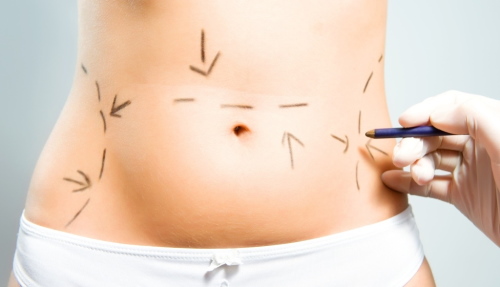
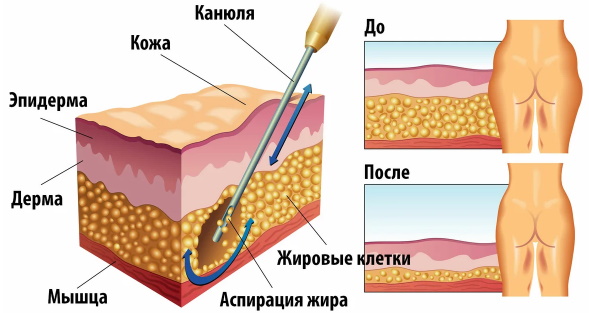
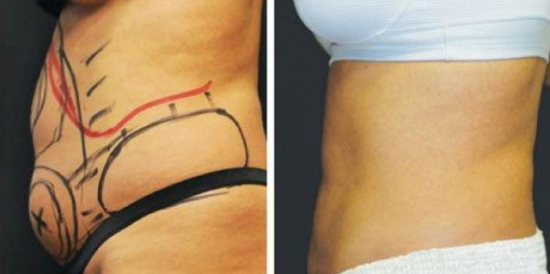
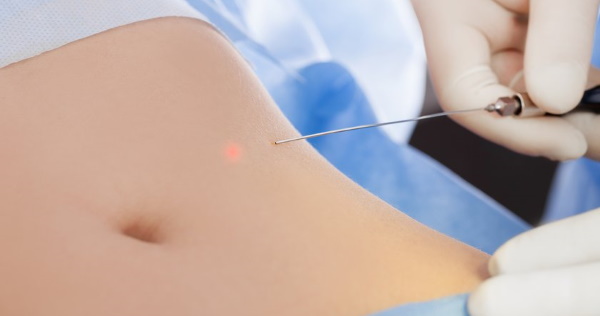
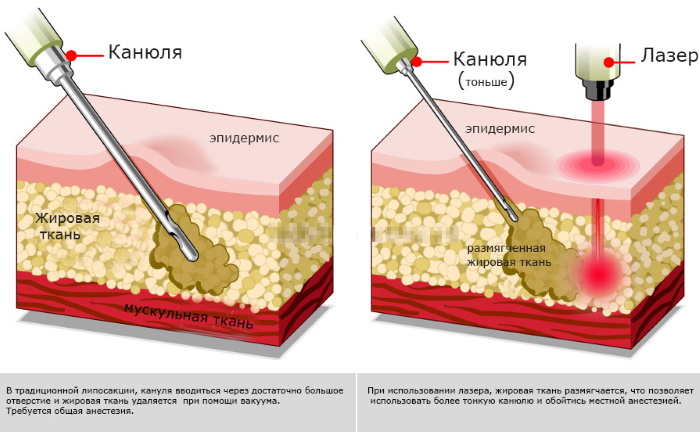
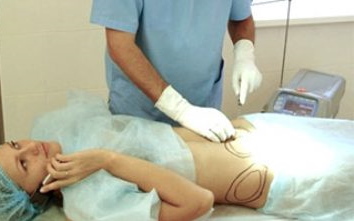

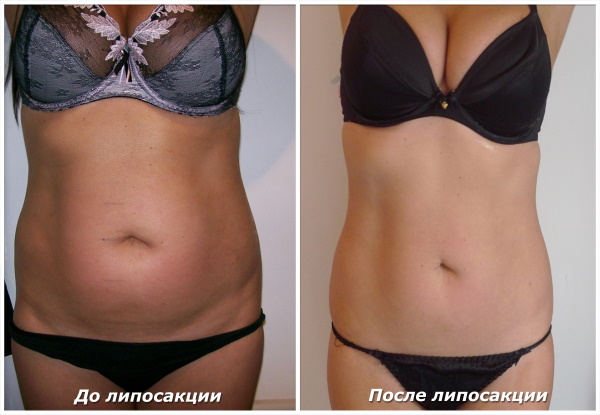
great! I want!